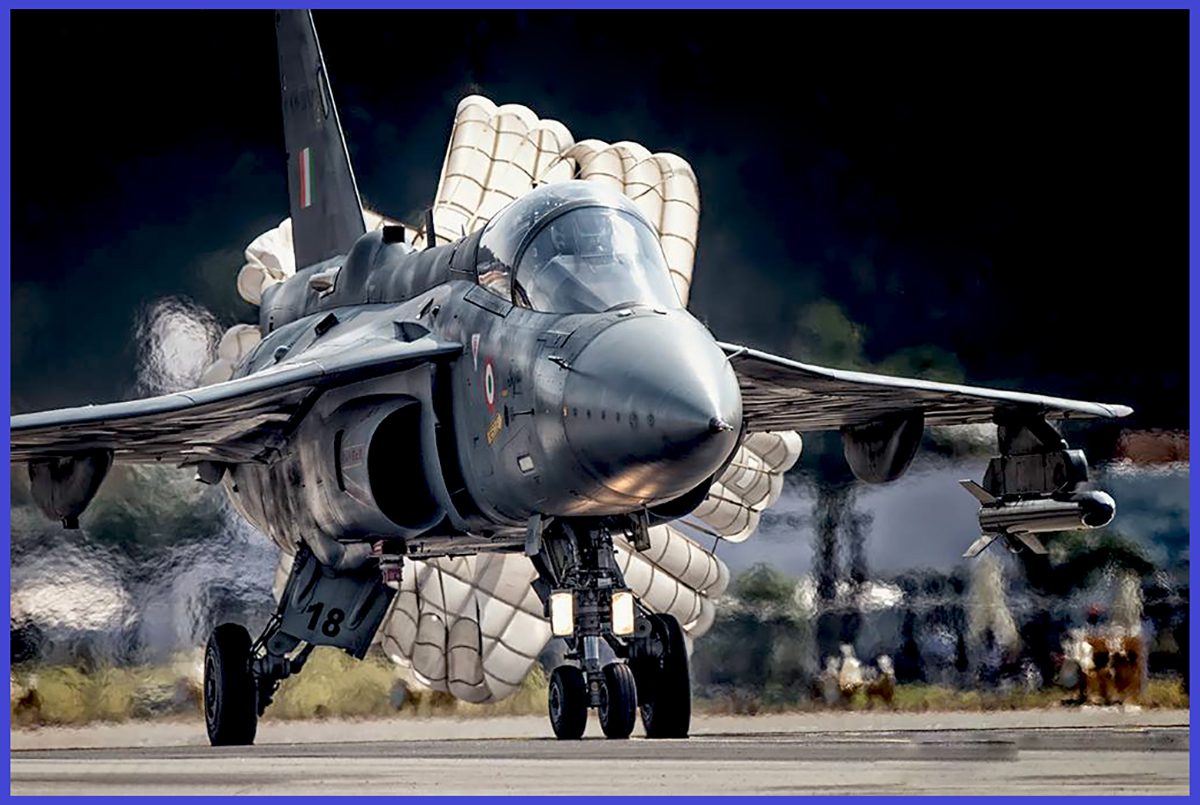One of the major India’s Mission towards Self-Reliant in the military sector, Discover the Best Details of the LCA Tejas Fighter, an Indian-origin, single-engine, delta-wing multi-role combat aircraft powered by an F404-GE-IN20 turbofan jet. Its invention is a testament to the progress of a successful country, marking a significant achievement for India’s aerospace industry and symbolizing the nation’s efforts to develop indigenous technology and strengthen its defence capabilities.
The Tejas represents the second fighter crafted by Hindustan Aeronautics Limited (HAL) aimed at achieving supersonic performance, following the initial development of HAL HF-24 Marut in the 1960s. It holds the distinction of being the smallest and lightest among its counterparts in the category of contemporary supersonic combat aircraft.
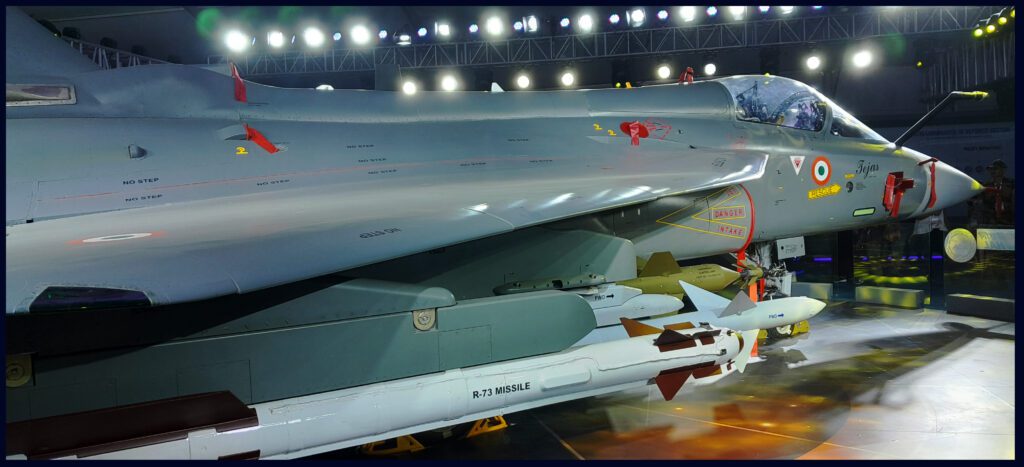
For the Indian Air Force and Indian Navy, a collaborative effort between the Aeronautical Development Agency (ADA) and the Aircraft Research & Design Centre (ARDC) of Hindustan Aeronautics Limited (HAL) resulted in the design of the LCA (Light Combat Aircraft ). The program was initiated in the 1980s, and launched by the Indian government in 1983 with the primary objective of developing a new light fighter aircraft to replace ageing IAF fighters, particularly the MiG-21 versions.

On January 4th, 2001, the first full-scale engineering development (FSED) example of the ADA LCA – TD-1 completed its maiden flight. The year 2003 marked the formal christening of the LCA as ‘Tejas.’ Distinguished as the smallest and lightest among contemporary supersonic military aircraft, Tejas attained initial operational clearance (IOC) in 2011 and final operational clearance (FOC) in 2019. The inaugural Tejas squadron, No.45 Squadron IAF Flying Daggers, achieved operational status in 2016, marking the replacement of their MIG-21s with the LCA Tejas.
The Tejas currently comprises three production models – Tejas Mk 1, Mk 1A, and Trainer. The Indian Air Force (IAF) has placed orders for 40 Tejas Mk1, 73 Tejas Mk 1A, and 18 Mk1 trainer aircraft. The IAF envisions procuring a total of 324+ aircraft across all variants, inclusive of the Tejas Mark 2. The Tejas Mark 2 is currently in the developmental stage and is anticipated to unveil prototypes by approximately 2026 to 2027.

Design Analysis of the LCA Tejas Aircraft
The LCA Tejas is meticulously designed as a lightweight, single/twin-seat, single-engine multirole fighter, addressing roles in air superiority, ground attack, and naval operations. Its distinctive design incorporates a tailless, compound delta wing featuring ‘relaxed static stability,’ augmenting manoeuvrability and agility. The principal objective of the Tejas is to replace the ageing fleet of fighters in the Indian Air Force, delivering a versatile platform to accommodate a wide array of mission requirements. Notably, the Mk 1A variant introduces an aerial refuelling probe located on the starboard side of the forward fuselage.

Materials and Construction: To achieve a superior strength-to-weight ratio, the airframe is primarily constructed from lightweight composite materials. The incorporation of modern materials not only enhances the overall agility but also contributes to improved fuel efficiency of the aircraft. The Tejas are assembled using carbon-fibre composite materials, along with titanium and aluminium-lithium alloys.
An impressive 45% of the airframe’s weight and 90% of its surface area consist of composite materials, setting it apart from other modern aircraft. Specific components, including the fin tip, are crafted from glass fibre, while both upper and lower wing surfaces, wing spars, and wing ribs are composed of carbon-fibre composites. This extensive use of composite materials not only reduces the aircraft’s weight but also ensures remarkable robustness.
Powerplant: The Tejas is propelled by a single General Electric F404-GE-IN20 turbofan engine, a crucial component that significantly influences its high-speed performance and agility. This state-of-the-art engine ensures a commendable thrust-to-weight ratio, enhancing the aircraft’s overall capabilities. Illustrating the commitment to advancing this technology, on 17 August 2021, Hindustan Aeronautics Limited (HAL) placed a substantial order totalling ₹5,375 crores (equivalent to ₹60 billion or US$760 million in 2023) for the procurement of 99 F404-GE-IN20 engines from GE Aerospace, underscoring the strategic collaboration between these entities.
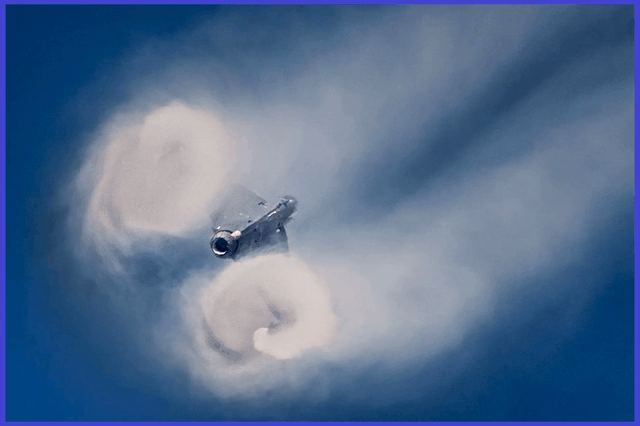
The F404-GE-IN20 engine represents a noteworthy enhancement of the F404-GE-F2J3, a proven powerplant successfully propelling the Tejas aircraft. These engines trace their lineage back to the F404 Turbofan, originally developed by the U.S. Navy for its Boeing F/A-18 Hornet aircraft. The F404-GE-IN20 is an advanced iteration that incorporates General Electric’s (GE) latest technology, featuring a Full Authority Digital Electronic Control (FADEC) system with established single-engine characteristics, ensuring maximum safety and reliability. This powerplant delivers the LCA with dependable power, coupled with outstanding operational and handling characteristics. Its straightforward, modular design not only ensures reliability but also facilitates ease of maintenance.
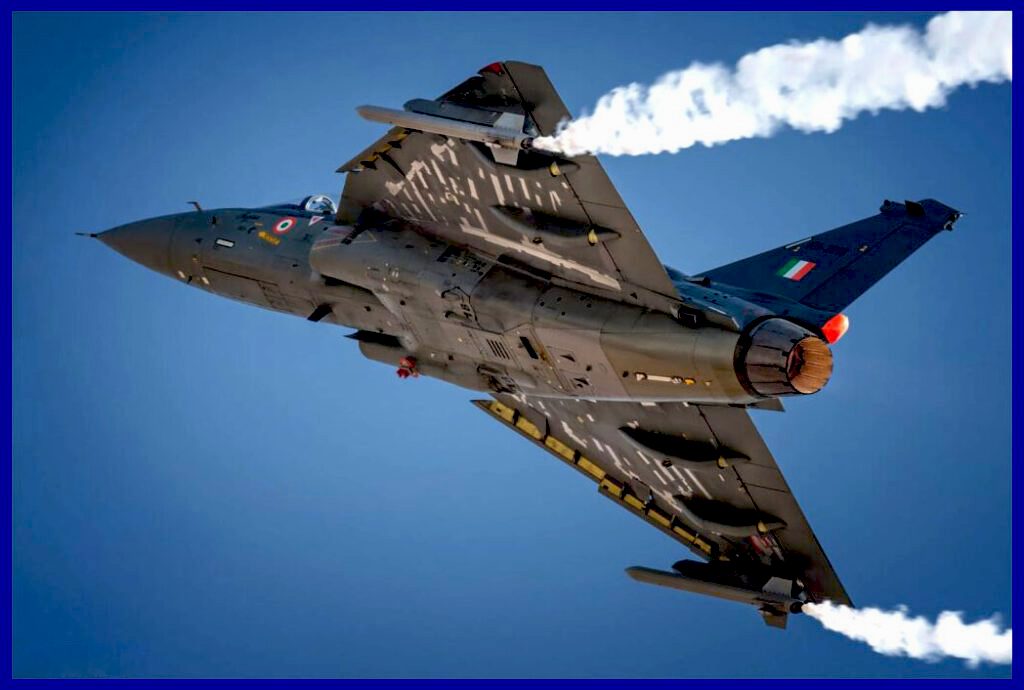
F404-GE-IN20 Specifications
- Thrust: 19,000 lb ( 85.0 kN )
- Airflow: 153 lb/sec ( 69.6 kg/sec )
- Weight: 2,355 lb ( 1,068 kg )
- Length: 154 in ( 391 cm )
- Inlet Diameter: 31 in ( 79 cm )
- Pressure Ratio: 28-to-1
LCA Tejas Dominance: Unveiling Advanced Avionics Prowess
The avionics suite includes radar systems, electronic warfare systems, and communication systems. The multi-mode radar allows for air-to-air and air-to-ground targeting, enhancing the aircraft’s versatility. Modern glass cockpit with a Heads-Up Display (HUD) and Multi-Function Displays (MFDs) for improved situational awareness.
The avionics of the Tejas are centred around the Elta EL/M-2032 radar. Some production Mark 1A fighters will be equipped with the Elta EL/M-2052 AESA radar, while others are expected to feature the Uttam AESA radar, an indigenous creation. For electronic warfare (EW) capabilities, the Defence Avionics Research Establishment (DARE) has developed an in-house suite. This suite comprises a flare dispenser system, an integrated self-protection jammer, and a chaff and radar warning receiver (RWR).

DARE’s latest electronic warfare system for the Mark 1A, known as the Unified Electronic Warfare Suite (UEWS), is equipped with digital radio frequency memory-based jamming and deception capabilities, electronic countermeasures, and electronic counter-countermeasure capabilities. In addition, The computerized flight control computer is developed by ADE (Aeronautical Development Establishment), and BEL (Bharat Electronics Limited) is in charge of manufacturing.
An Israeli invention, the Elta ELL-8222WB pod-mounted self-protection jammer, is also carried by the Tejas Mk 1A. Network-centric warfare capabilities and secure communications based on software-defined radio will be features of the Mk 1A. Forward-looking infrared (FLIR) and other pod-based sensors are also compatible with the Tejas. Rafael Litening III targeting/reconnaissance pods are currently approved for Tejas’ use. A more complex version called Litening 4I will soon be included in the Tejas.
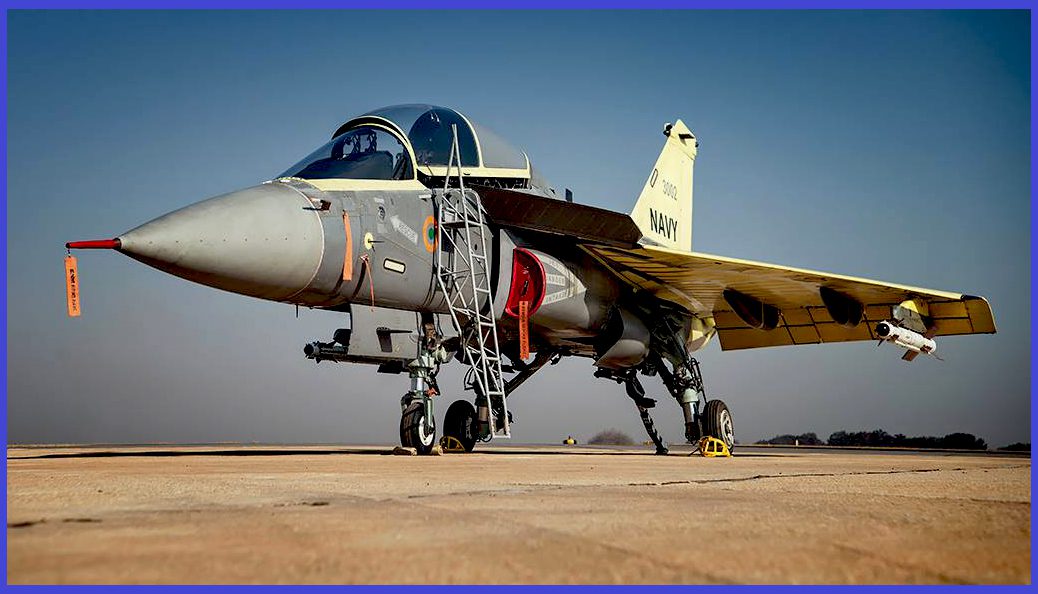
The Tejas features a glass cockpit that is compatible with night vision goggles and is outfitted with a locally created head-up display (HUD), three multi-function displays, and two Smart Standby Displays from the Central Scientific Instruments Organisation (CSIO). To reduce the pilot’s workload, the Tejas incorporates a hands-on throttle and stick (HOTAS) system. The pilot interacts with onboard systems using a multifunctional keyboard and multiple selection panels, while the displays provide essential information necessary for operation.
Tejas pilots are now using a helmet-mounted display system called Elbit DASH IV. In the event of an emergency, the Bharat Electronics Limited-developed air data computer and “get-you-home” panel on the Tejas help the pilot. The DRDO-developed canopy severance mechanism and Martin-Baker 16LG zero-zero ejection seat are installed in the cockpit to ensure safe ejection. While Tejas Mark 1A features an onboard oxygen-generation system (OBOGS), Tejas Mark 1 uses a traditional liquid oxygen (LOX) system for life support.
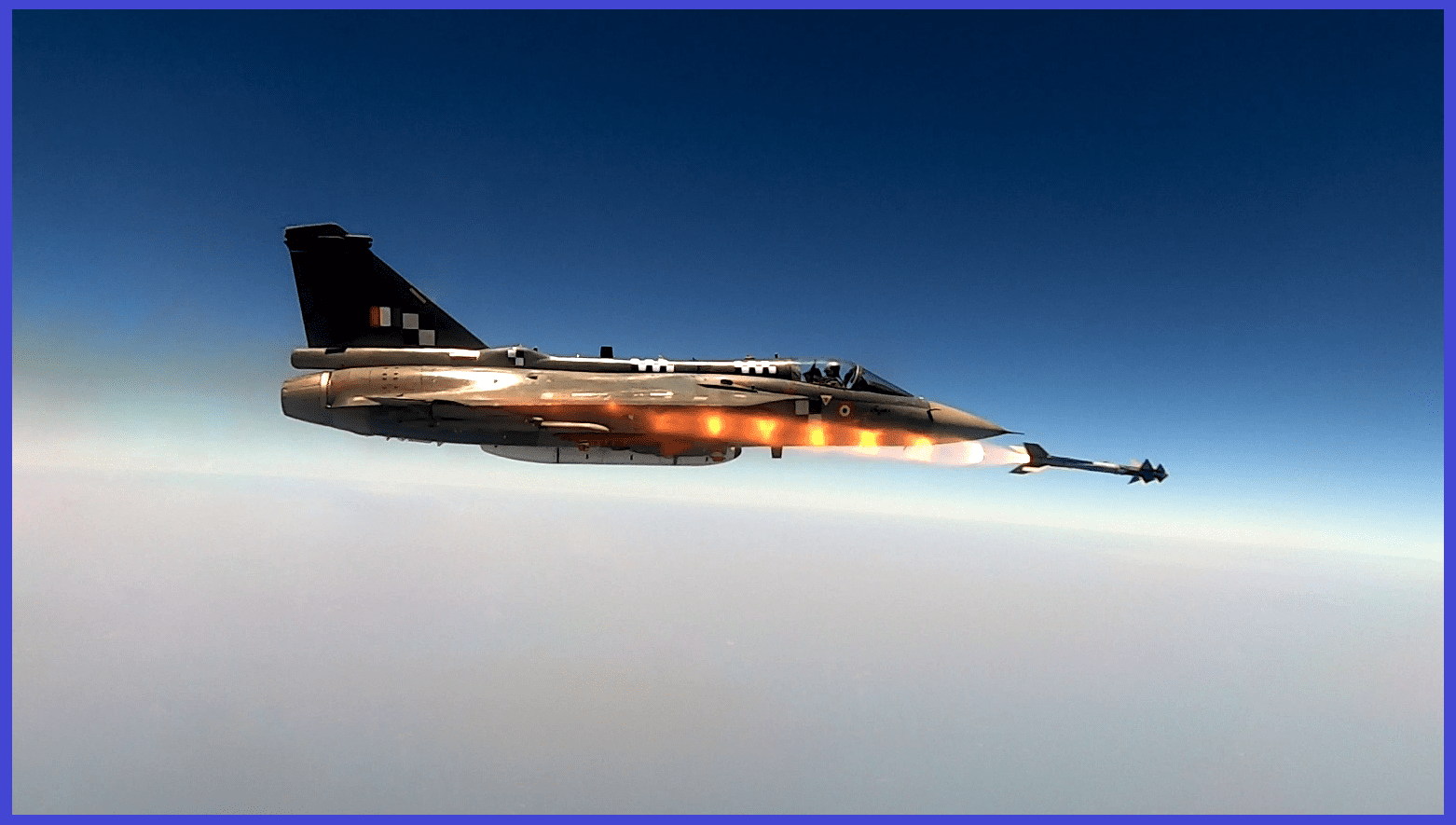
LCA Tejas Arsenal: The Comprehensive Weapon System
In a combat scenario, a fighter aircraft is essentially a weapons platform. Tejas can carry over 5 tons of external stores, including missiles, rockets, bombs, and drop tanks, in 9 stations designed for air-to-air, air-to-ground, and air-to-sea roles. A glass cockpit, digital avionics, and an efficient weapon system interface effectively supplement the high manoeuvrability and carefree handling features of the Tejas.
A well-designed Pilot Vehicle Interface (PVI) facilitates easy interpretation of targets. The Tejas, as a Weapon System, incorporates a suite of sensors for early threat detection, including a high-performance Pulse Doppler Multi-Mode Radar (MMR), providing Beyond Visual Range (BVR) attack capability. These are among the special features that enhance the effectiveness of Tejas as a Weapon System.

An advanced Store Management System (SMS) is intricately configured to facilitate the seamless integration, carriage, and release of various weaponry. Rigorous testing is undertaken on a dedicated weapon integration rig, scrutinizing all components and features within the SMS architecture. Tejas is furnished with nine strategically positioned hardpoints beneath the port and starboard side air intakes, under the centre fuselage, and three under each wing, including three wet hardpoints tailored for carrying drop tanks.
One hardpoint, specifically situated under the port side air intake, is reserved for holding sensor pods such as the IRST, FLIR, or laser rangefinder/designator. The inboard pairs of wing stations and the centerline pylon are additional locations for these sensor pods. Interestingly, the Mark 1A version improves its capabilities by adding an aerial refuelling probe to the forward fuselage’s starboard side.
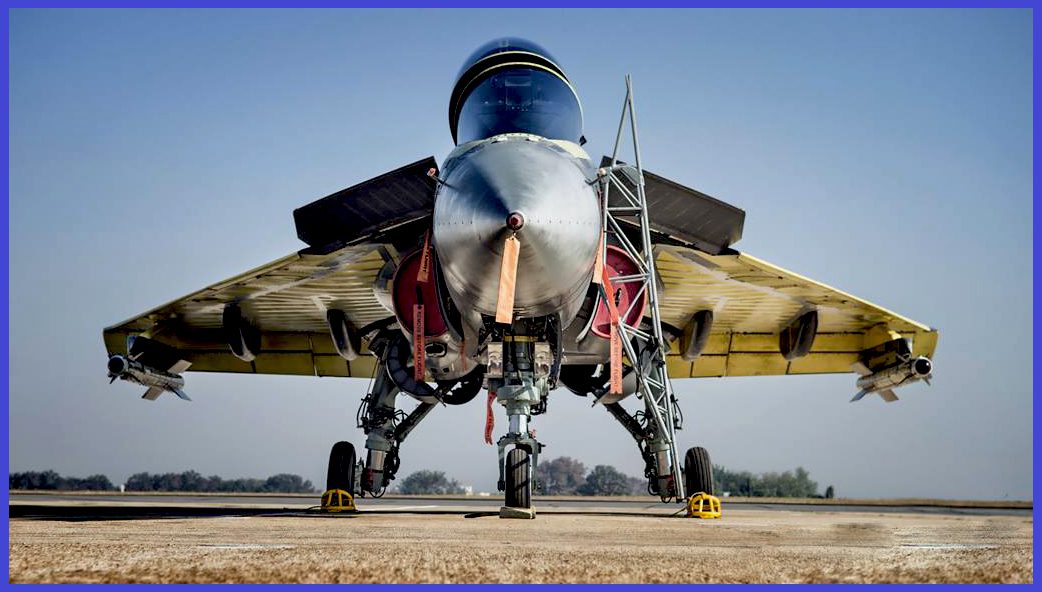
The Tejas weapon system is comprised of a versatile array, including I-Derby ER and Astra for beyond-visual range air-to-air engagements, as well as R-73, Python-5, and ASRAAM for close combat scenarios. In addition to these capabilities, the Tejas features an internal 23 mm Gryazev-Shipunov GSh-23 twin-barreled autocannon located under the starboard side air intake. Currently in development is the BrahMos-NG supersonic cruise missile designed specifically for the Tejas and SU-30MKI fighter.
Notably smaller and lighter than the standard BrahMos, this missile can be seamlessly integrated under the aircraft’s centre fuselage, enhancing tactical capabilities. The fighter’s overall design is meticulously tailored to accommodate a diverse range of weaponry, drawing from Indian, Israeli, British, French, and American sources.

Upgradability of the LCA Tejas
The LCA Tejas exhibits a robust design foundation that facilitates seamless upgradability. Its modular architecture allows for the integration of cutting-edge avionics, weaponry, and sensor systems, ensuring adaptability to evolving operational requirements. The aircraft’s open architecture and use of indigenous technologies further streamline the incorporation of upgrades, enabling the integration of state-of-the-art capabilities.
The Tejas Mark 1A, incorporating more than 40 enhancements over the Mark 1 variant, is anticipated to commence production in the 2023–24 timeframe. The upgraded Mark 1A aircraft is set to maintain the fundamental Mark 1 airframe, showcasing a novel avionic suite anchored by the EL/M-2052 AESA Radar and Uttam AESA Radar. It further incorporates the DARE Unified Electronic Warfare Suite (UEWS), an externally mounted self-protection jammer (SPJ) for heightened survivability, instrument flight rules (IFR) capability, and an Onboard Oxygen Generation System (OBOGS) developed by the Defence Bioengineering and Electromedical Laboratory (DEBEL) to enhance endurance. Additionally, the Tejas Mark 1A boasts an expanded weapon suite, featuring the Astra missile.
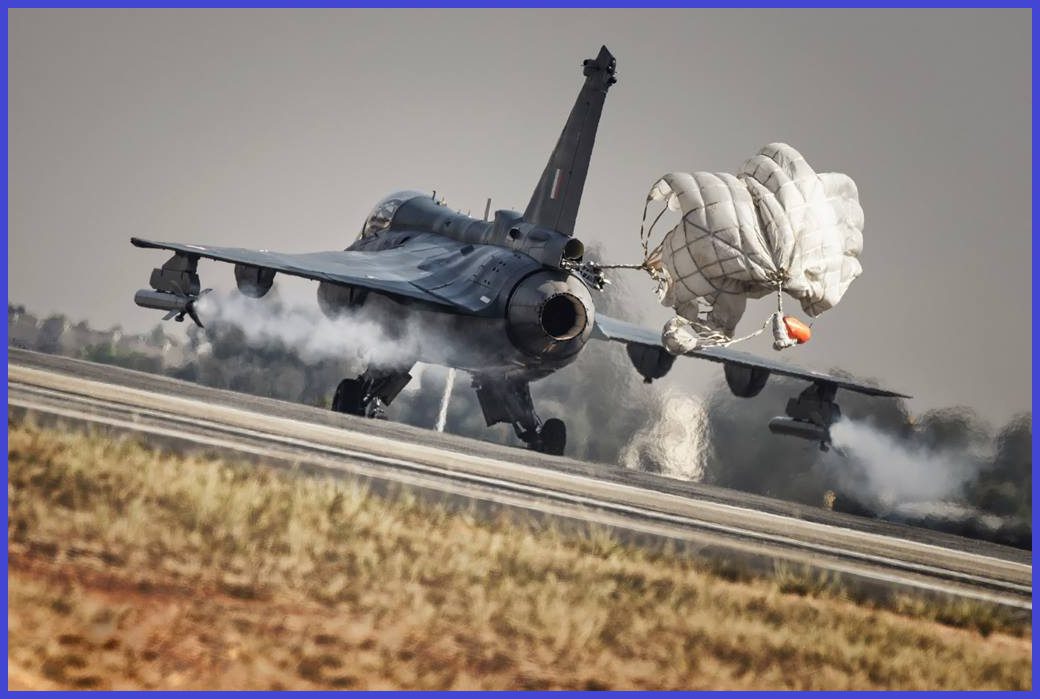
Bharat Electronics Limited (BEL) is poised to supply 20 locally developed critical avionics and upgrades, including Digital Flight Control Computers from ADA, Air Data Computers from DRDO, Weapon Computers from ADE, Radar Warning Receivers from the Combat Aircraft Systems Development and Integration Centre (CASDIC), and Head-up Displays from the Central Scientific Instruments Organisation (CSIO). This diverse suite underlines BEL’s commitment to enhancing the Tejas aircraft’s capabilities.
Simultaneously, HAL is progressing towards delivering the first Tejas Mark 1A by February 2024. This upgraded variant, incorporating numerous enhancements, symbolizes collaborative efforts across various research and development entities. The completion of the Indian Air Force’s order for 83 Tejas aircraft is expected by 2029, with an impressive production rate exceeding 16 units per year. This underscores HAL’s dedication to fortifying India’s aerial defence capabilities.
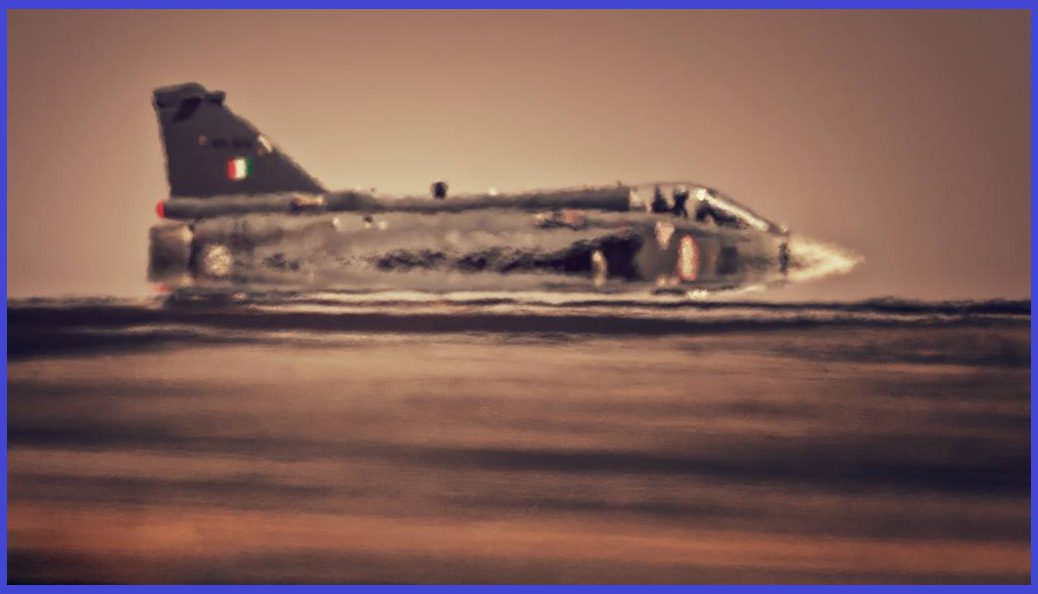
The Naval LCA program commenced in 2003 with two phases outlined by ADA. In Phase 1, two naval prototypes, the two-seat NP-1 and the single-seat NP-2, were developed based on the Tejas Mark 1 design for carrier suitability certification and weapons integration. Phase 2 planned two single-seat prototypes based on the Tejas Mark 2 design, incorporating design optimization and integration of the General Electric F414 INS6 engine. The first naval prototype, NP-1, was rolled out in July 2010 and conducted its inaugural flight on 27 April 2012. The naval LCA features reinforced landing gear to withstand the forces during carrier takeoff and arrested recovery.

In December 2014, the LCA Navy achieved its inaugural ski-jump-assisted takeoff at INS Hansa. In 2019, a prototype conducted the first arrested landings at the SBTF in Goa during both day and night. As of December 2023, the Naval LCA program accomplished over 250 test flights, including ski jump takeoffs. January 2020 marked the successful first arrested landing and ski-jump-assisted takeoff of the naval prototype NP-2 from the aircraft carrier INS Vikramaditya. Subsequently, in February 2023, the same naval prototype achieved its first landing and takeoff from the indigenous aircraft carrier INS Vikrant.
Yet, in July 2020, the DRDO declared the abandonment of the LCA Mark 2 Navy development plan. Instead, they initiated work on a novel carrier-borne fighter aligned with the Indian Navy’s 2016 multi-role carrier-borne fighter requirement, aimed at replacing the existing fleet of MIG-29K/KUB carrier-based fighters. During Aero India 2021, they revealed the Twin Engine Deck Based Fighter (TEDBF), a new twin-engine naval fighter. The knowledge acquired from the N-LCA program will contribute to the advancement of the TEDBF.

LCA Tejas Mk1 Specifications
- Crew: 1 or 2
- Length: 43ft 4in (13.2m )
- WingSpan: 26ft 11in (8.2m)
- Height: 14ft 5in (4.4m)
- Wing area: 38.4 m2 ( 413 sq ft )
- Empty weight: 6,560 kg ( 14,462 lb )
- Gross weight: 9,800 kg ( 21,605 lb )
- Max takeoff weight: 13,500kg ( 29,762 lb )
- Fuel capacity: 2,458 kg ( 5,419 lb ) internal. Plus it can carry 3 additional drop tanks, one in the fuselage & two under each side of the wings.
- Payload: 5,300 kg ( 11,700 lb )
- Power plant: 1 x General Electric F-404-GE-IN20 afterburner turbofan with 85 kN ( 19,000 lb ) max thrust with afterburner
- Performance: Max speed– 1,980km/h ( 1,230 mph )
- Range– 1,850 km ( 1,150 mi ), Combat Range: hi-lo-hi_ 500 km (310 mi), Ferry Range– 3,200km ( 1,986 mi ) with two external drop tanks.
- Mach: 1.8
- Service ceiling: 16,000m ( 53,500 ft ),
- g limits: +9/-3.5
- Thrust/weight: 0.94 to 1.07
- Armament: Got 9 hard points ( 2 × beneath the port and starboard side intake trunk for targeting pods, 6 × under-wing, and 1 × under-fuselage) ) with a total payload capacity of 5,300kg ( 11,685 lb )
- Missiles: Includes Air-to-air (R-77, R-73, I-Derby, Python-5, ASRAAM, Astra mk1) Air-to-surface (Rudram, Kh-59ME, Kh-59L, Kh-59T, Kh-59MK, Kh-35, Hammer, BrahMos NG)
- Bombs: Precision-guided munitions ( Spice, JDAM, SAAW ) Laser-guided bombs ( Paveway, KAB-1500 ), Cluster munitions & some unguided bombs

Alongside this article, seize the exclusive opportunity to acquire a 1/72 scale premium diecast model of a General Dynamics F-111A “Combat Lancer.” These extraordinary and renowned military aircraft, celebrated as the pinnacle of advanced and sophisticated fighter planes, are currently available for purchase through AirModels with global delivery options. Act promptly to secure these exceptional models before the limited stock is depleted

In conclusion, the LCA Tejas is a remarkable aircraft that reflects India’s growing capabilities in the field of aerospace technology. Its development has been a long and challenging journey, but it has resulted in a state-of-the-art combat aircraft that can perform various missions with remarkable efficiency. With its advanced avionics, weapons systems, and other features, LCA Tejas is a potent symbol of India’s ambition to become a major player in the global defence industry.
And, most interestingly and fortunately, since the inception of the fighter aircraft, as of 2023, not a single crash of the aircraft has been recorded, which is very rare in terms of developing an aircraft from scratch. As it continues to evolve and improve, LCA Tejas will undoubtedly play a critical role in ensuring the security and sovereignty of the Indian nation for years to come.
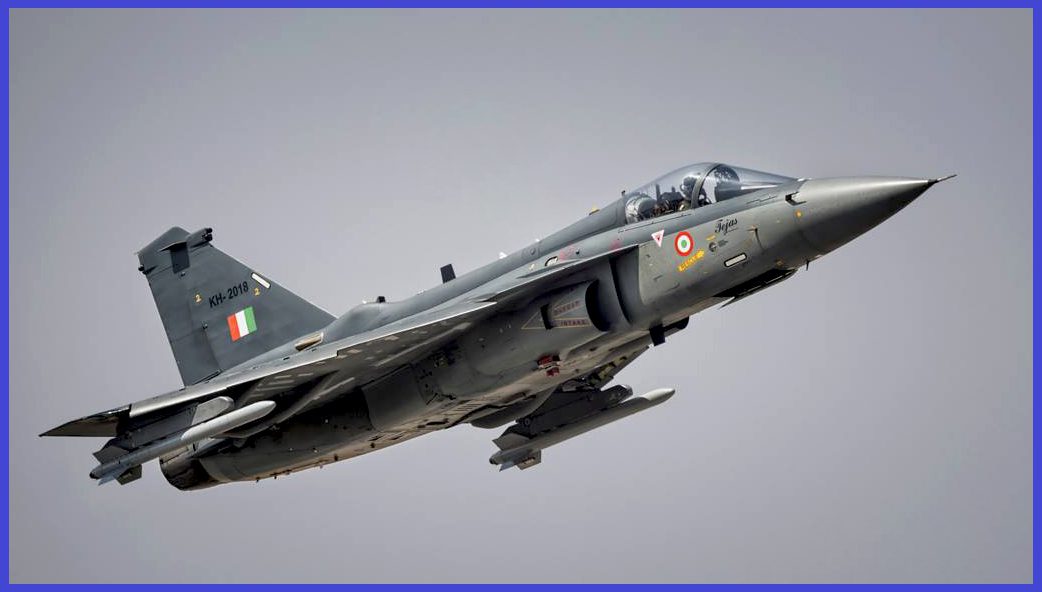
Important Announcement for Our Valued Readers!
After an article is published, it is possible that updates or changes may have occurred beyond the time of publication. Therefore, it is important to be aware that certain information in the article might be outdated. To ensure the most accurate analysis, it is highly recommended to verify the content with the latest sources available.
However, we are dedicated to delivering outstanding articles on military products and global updates. Maintaining quality and smooth operation requires resources. Your support sustains our efforts in providing insightful content. By purchasing high-quality products through our affiliated links, you help us keep our platform alive and acquire top-notch items. Your unwavering support is invaluable and inspires us to strive further.
We welcome your suggestions and requests for more information, as we value feedback from our readers. If there’s specific defence material or equipment not covered on our site, please share your request in the comments. We’ll strive to research and provide the required information. We sincerely thank you for your unwavering interest in our website, and we eagerly anticipate hearing from you! Enjoy your reading experience!
